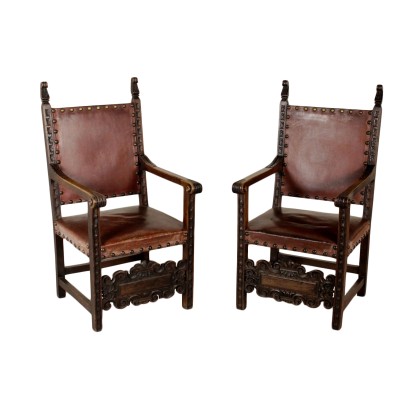Revival Pair of Armchairs
Features
Style: Neo-Renaissance Revival
Age: 20th Century / 1901 - 2000
Year: Prima metà '900
Origin: Italy
Main essence: Walnut
Description
A pair of carved revival armchairs, walnut. Padded seats and backs, leather upholstery with studs. Manufactured in Italy, first half of the 20th century.
Product Condition:
The item shows signs of wear due to age. Any damage or loss is displayed as completely as possible in the pictures. It may require restoration and buffing.
Dimensions (cm):
Height: 123
Width: 64
Depth: 71
Additional Information
Style: Neo-Renaissance Revival
Stylistic revival, of the 20th century, of the forms typical of the Renaissance style.
This is a style that re-proposes, looking at the grandeur of the past, decorative motifs and ornaments typical of the 16th century.
Masks, frames, columns carved with herms that make up architectural structures typical of Renaissance palaces, are the elements that characterize the neo-Renaissance style.
These elements will remain in the production of furnishings until the early 1900s, contaminating themselves with floral elements.
Find out more about the Neo-Renaissance with our insights:
A Milanese library between Belle Epoque and Fascism
The Austrian taste of Baroque
Gothic sculpture
Art Déco
Neoclassical architecture



























